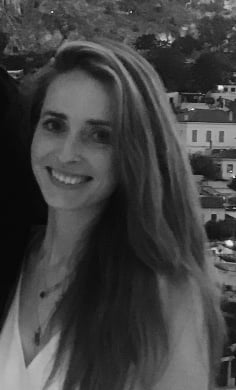Group 7
- The elements in Group 7 are known as the halogens
- These are fluorine, chlorine, bromine, iodine and astatine
- These elements are non-metals that are poisonous
- All halogens have similar reactions as they each have seven electrons in their outermost shell
- Halogens are diatomic, meaning they form molecules made of pairs of atoms sharing electrons (forming a single covalent bond between the two halogen atoms)
- When halogen atoms gain an electron during reactions, they form -1 ions called halide ions

The atoms of the elements of Group 7 all have 7 electrons in their outer shell
- At room temperature, the halogens exist in different states and colours, with different characteristics
The Appearance, Characteristics and Colour in Solution of the Halogens

- The melting and boiling points of the halogens increase as you go down the group
- This is due to increasing intermolecular forces as the atoms become larger, so more energy is required to overcome these forces

This graph shows the melting and boiling points of the halogens
- At room temperature (20 °C), the physical state of the halogens changes as you go down the group
- Fluorine and chlorine are gases, bromine is a liquid and iodine is crumbly solid
- The colours of the halogens also change as you descend the group - they become darker

The physical states and colours of chlorine, bromine and iodine at room temperature
Examiner Tip
Exam questions on this topic occur often so make sure you know and can explain the trends of the group 7 elements in detail, using their electron configurations.
Halogen Reactivity
- Reactivity of Group 7 non-metals decreases as you go down the group
- As you go down Group 7, the number of shells of electrons increases, the same as with all other groups
- However, halogen atoms form negative ions when they gain an electron to obtain a full outer shell
- Fluorine is the smallest halogen, which means its outermost shell is the closest to the positive nucleus of all the halogen
- Therefore, the ability to attract an electron is strongest in fluorine making it the most reactive
- As you move down the group, the forces of attraction between the nucleus and the outermost shell decreases
- This makes it harder for the atoms to gain electrons as you go down the group making them less reactive
Displacement Reactions
- A halogen displacement reaction occurs when a more reactive halogen displaces a less reactive halogen from an aqueous solution of its halide
- The reactivity of Group 7 elements decreases as you move down the group
- You only need to learn the displacement reactions with chlorine, bromine and iodine
- Chlorine is the most reactive and iodine is the least reactive
Chlorine with Bromine & Iodine
- If you add chlorine solution to colourless potassium bromide or potassium iodide solution a displacement reaction occurs:
- The solution becomes orange as bromine is formed or
- The solution becomes brown as iodine is formed
- Chlorine is above bromine and iodine in Group 7 so it is more reactive
- Chlorine will displace bromine or iodine from an aqueous solution of the metal halide
chlorine + potassium bromide → potassium chloride + bromine
Cl2 + 2KBr → 2KCl + Br2
chlorine + potassium iodide → potassium chloride + iodine
Cl2 + 2KI → 2KCl + I2
Bromine with Iodine
- Bromine is above iodine in Group 7 so it is more reactive
- Bromine will displace iodine from an aqueous solution of the metal iodide
bromine + potassium iodide → potassium bromide + iodine
Br2 + 2KI → 2KBr + I2
Summary of the displacement reactions of the halogens
(chlorine, bromine and iodine)

- You could be asked at Higher Tier to provide ionic equations to show what is happening during displacement reactions of the halogens
- These are:
Cl2 + 2Br- → 2Cl- + Br2
Cl2 + 2I- → 2Cl- + I2
Br2 + 2I- → 2Br- + I2
Reactions of Halides
- Chlorine, bromine and iodine react with metals and non-metals to form compounds
Metal Halides
- The halogens react with some metals to form ionic compounds which are metal halide salts
- The halide ion carries a -1 charge so the ionic compound formed will have different numbers of halogen atoms, depending on the valency of the metal
- E.g., sodium is a Group 1 metal:
2 Na + Cl2 → 2 NaCl
- Calcium is a Group 2 metal:
Ca + Br2 → CaBr2
- The halogens decrease in reactivity moving down the group, but they still form halide salts with some metals including iron
- The rate of reaction is slower for halogens which are further down the group such as bromine and iodine

Sodium donates its single outer electron to a chlorine atom and an ionic bond is formed between the positive sodium ion and the negative chloride ion
Non-metal Halides
- The halogens react with nonmetals to form simple molecular covalent structures
- For example, the halogens react with hydrogen to form hydrogen halides (e.g., hydrogen chloride)
- Reactivity decreases down the group, so iodine reacts less vigorously with hydrogen than chlorine (which requires light or a high temperature to react with hydrogen)
- Fluorine is the most reactive (reacting with hydrogen at low temperatures in the absence of light)
- Other compounds formed include CCl4, HF and PCl5

